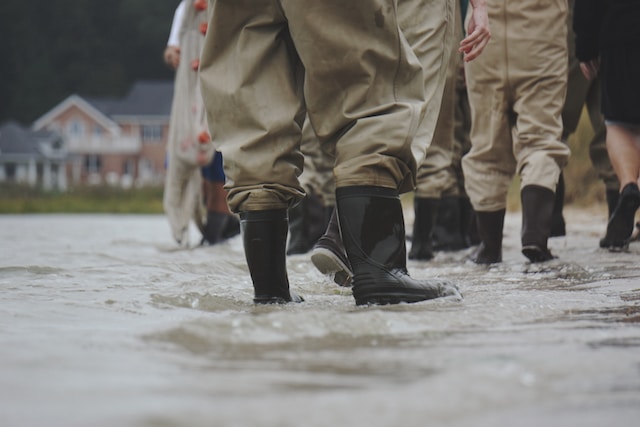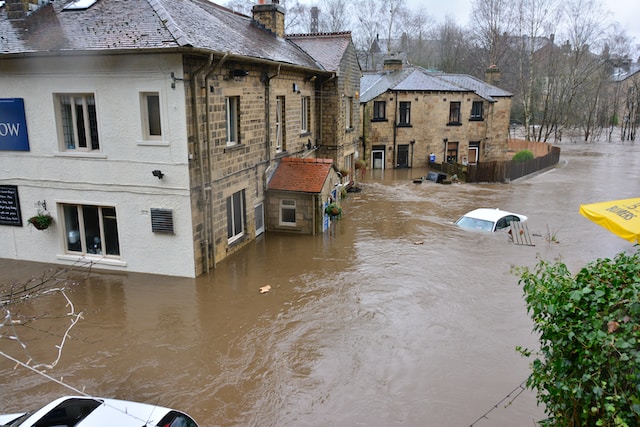Floods can wreak havoc on commercial properties, causing extensive damage, financial losses, and operational disruptions. If your commercial property has recently been affected by a flood, you need to act swiftly and strategically to minimize the long-term consequences. So read on for a step-by-step guide to help you navigate the aftermath of a flood and get your business back on its feet.
Consult with Professionals
Your immediate concern should be the safety of your employees, customers, and yourself. Ensure everyone is out of harm’s way before assessing the damage. Remember, floodwaters can carry contaminants and pose health risks, so exercise caution when reentering the property. Water restoration experts at https://cottongds.com/water-restoration, for example, can help you secure and restore your property. And, make sure to engage experts like electricians, plumbers, and contractors to evaluate and repair damage to your building’s infrastructure. Their expertise will ensure that your property is safe and functional once more.
- Electrical Assessment: Have a licensed electrician inspect the electrical system to ensure it’s safe for use. Electrical components damaged by the flood may pose fire hazards or electrical shocks. A professional can make necessary repairs and replacements.
- Plumbing Evaluation: Consult a qualified plumber to assess the plumbing system. Floodwater can contaminate water lines and sewage systems, leading to health risks. A professional plumber can sanitize and repair the plumbing infrastructure as needed.
- Structural Repair: Hire a contractor or structural engineer to assess the building’s structural integrity. Structural damage, if left unaddressed, can compromise the safety and longevity of your property. They will provide recommendations and repairs to restore the building’s stability.
- HVAC System Inspection: Don’t forget to have your heating, ventilation, and air conditioning (HVAC) system checked by a professional. Floodwaters can damage HVAC components, affecting indoor air quality and overall comfort. A specialist can identify and rectify any issues to ensure your system operates efficiently and safely.
Contact Your Insurance Provider
Notify your insurance company as soon as possible. Document the damage with photos and descriptions to support your claim. Understand the scope of your policy, including coverage for flood damage, business interruption, and other relevant aspects.
- Prompt Notification: The sooner you contact your insurance provider, the faster your claim can be processed. Promptly report the flood damage and provide all necessary information to initiate the claims process efficiently.
- Detailed Documentation: Take clear, comprehensive photos and videos of the damage. Provide descriptions for each item, including their value and condition before the flood. This documentation will be crucial in substantiating your claim.
- Policy Understanding: Review your insurance policy carefully. Understand the extent of your coverage, including specifics about flood damage, business interruption, and any additional endorsements. Knowing your coverage limits and deductibles will help you manage expectations.
- Claims Assistance: If you’re uncertain about the claims process, ask your insurance provider for guidance. They can provide valuable information about what’s covered, how to file your claim, and the timeline for receiving compensation. Their expertise can help you navigate the often complex world of insurance claims more effectively.

Begin Mitigation and Cleanup
Swiftly initiate cleanup and mitigation efforts. Remove standing water, mud, and debris. This may involve enlisting the help of professional restoration services to prevent mold growth and structural damage. Your goal is to prevent further deterioration.
- Protect Personal Safety: Before entering the property, ensure that you and anyone involved in cleanup wear appropriate personal protective equipment (PPE), including gloves, masks, and waterproof boots. The floodwaters may contain hazardous substances, so protecting yourself is paramount.
- Remove Saturated Materials: Discard and remove any items that cannot be salvaged, such as heavily damaged furniture, carpeting, or drywall. This is essential to prevent mold growth and ensure a safe environment for restoration.
- Thoroughly Dry the Space: Utilize industrial-grade dehumidifiers and fans to expedite the drying process. Eliminating excess moisture is vital for preventing structural damage, as well as mold and mildew growth, which can exacerbate health issues and further property damage.
- Inspect for Structural Integrity: Engage a structural engineer or contractor to assess the integrity of your building. They can identify any hidden structural damage caused by the flood, ensuring a safe and secure environment for the future.
Address Business Continuity
During this challenging period, you must think about your business’s continuity. Communicate with employees, customers, and suppliers about the situation and any temporary changes in operations. Develop a business continuity plan to minimize financial losses and maintain client relationships.
Facing flood damage to your commercial property can be a daunting experience. However, by taking these vital steps – prioritizing safety, involving your insurance provider, documenting damage, starting cleanup, consulting professionals, and addressing business continuity – you can mitigate the damage and set your business on the path to recovery. Remember, the sooner you act and the more methodical you are in your approach, the better the chances of a successful recovery and minimizing the long-term impacts of the flood.
